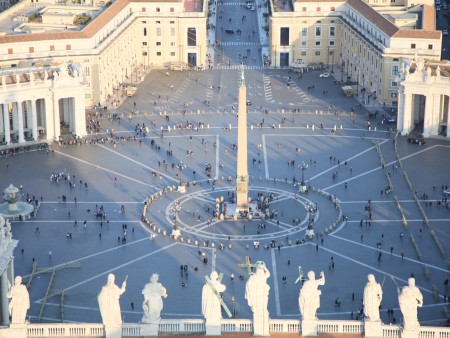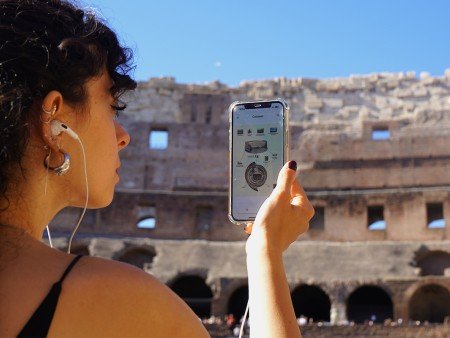Public Transportation in Rome: Problems, Criticisms, and Future Perspectives
Transports in Rome: how the Eternal City is trying to fix its mobility issues into opportunities for the future
19 August 2024
Rome Travel GuideRome, the capital of Italy, is a city with a millennia-old history but also faces modern challenges, particularly in terms of urban mobility. Public transportation in Rome is a complex system that includes buses, trams, subways, and regional trains, primarily managed by ATAC (Rome's public transportation company) and other companies like Trenitalia for railway services. Despite efforts to modernize and improve efficiency, Rome's public transport system continues to be a subject of criticism and debate, due to structural issues and the need for innovation.
Rome's Transport Network
Buses and Trams
The bus network is the backbone of public transportation in Rome, with hundreds of lines covering the entire city. ATAC manages about 12,000 stops, serving both central and peripheral areas. However, the bus network suffers from numerous issues, including frequent delays, overcrowding, and unreliability. These problems are due to factors like heavy traffic, the lack of dedicated bus lanes, and an often outdated fleet of vehicles. Trams, which were once a symbol of Roman mobility, are now limited to a few lines. The tram network extends for about 40 km, with routes connecting central and semi-central areas. Again, outdated infrastructure and poor maintenance limit its effectiveness.
Subway
Rome's subway system consists of three main lines: Line A (Orange), Line B (Blue), and Line C (Green). Inaugurated in 1955, the network is relatively young compared to those of other major European capitals. Line A runs through the city from northwest to southeast, connecting key points like Termini Station and Piazza di Spagna. Line B, on the other hand, runs from north to south, dividing the city along a central axis. Finally, Line C, the most recent, is still under construction and currently extends from Monte Compatri-Pantano to San Giovanni. Despite expansion projects, Rome's subway remains insufficient to meet the needs of a modern metropolis. There are few lines, the frequency is not always adequate, and maintenance is often lacking, with periodic closures for renovation work causing significant inconvenience to commuters.
Regional Railways
In addition to the subway, Rome is served by a network of regional railways connecting the city with surrounding areas and major locations in Lazio. These trains, mainly managed by Trenitalia, are an important resource for commuters, especially those living outside the urban center. The main lines include Roma-Lido, Roma-Nord, and Roma-Giardinetti, which suffer from severe infrastructural problems, with frequent delays and disruptions.
Challenges and Criticisms
Rome's public transportation system is often criticized by residents and visitors. The main issues include:
- Delays and Unreliability: Urban traffic congestion negatively impacts the efficiency of surface transport like buses and trams. The lack of an integrated traffic control system and dedicated bus lanes contributes to frequent delays.
- Lack of Investment: The chronic underfunding of infrastructure is a significant problem. Many vehicles are outdated and need replacement. Infrastructure maintenance is often inadequate, with frequent breakdowns causing service disruptions.
- Overcrowding: Public transport is especially overcrowded during peak hours, causing significant discomfort for passengers. This is particularly problematic on subway lines and regional trains.
- Limited Integration: The integration between various transport systems is limited. The network of buses, trams, subways, and regional railways is not always well-coordinated, making connections and transfers between modes difficult.
Future Prospects
Despite these difficulties, there are ongoing initiatives to improve Rome's public transportation system. These include:
- Subway Expansion: Work is underway to extend Line C and improve existing infrastructure. The construction of new stations and the modernization of trains are priorities to make the subway more efficient and extensive.
- Electric and Sustainable Mobility: Rome is investing in more environmentally friendly transportation, such as electric and hybrid buses. The goal is to reduce pollution and improve air quality in the city.
- Tram Network Expansion: An expansion of the tram network is planned, with new lines that will connect currently underserved areas. This could relieve the burden on surface transportation and improve urban mobility.
- System Integration: Studies are underway to improve integration between different modes of transport, making transfers easier and reducing waiting times. The introduction of a single integrated ticket is one of the planned measures.
Public transportation in Rome represents a complex challenge, but also an opportunity to transform the city into a more modern and sustainable metropolis. While there are structural and managerial problems that require urgent intervention, the ongoing initiatives show a willingness to change. For this to translate into a real improvement in the quality of life for citizens and visitors, continuous commitment from institutions and greater civic participation will be necessary.
Our categories:
You may also be interested ...

Vatican Private Tour with Sistine Chapel & St. Peter's Basilica: Renaissance’s Wonders
Private tour
Discover with a skip the line Private Vatican Tour the Sistine Chapel, Vatican Museums and St Peter’s Basilica
starting from: € 375

Colosseum Guided Audio Tour with Roman Forum and Palatine Hill
Private tour
Discover Ancient Rome’s secrets and history with our immersive Colosseum guided audio tour, rich in image and content
starting from: € 51 € 42